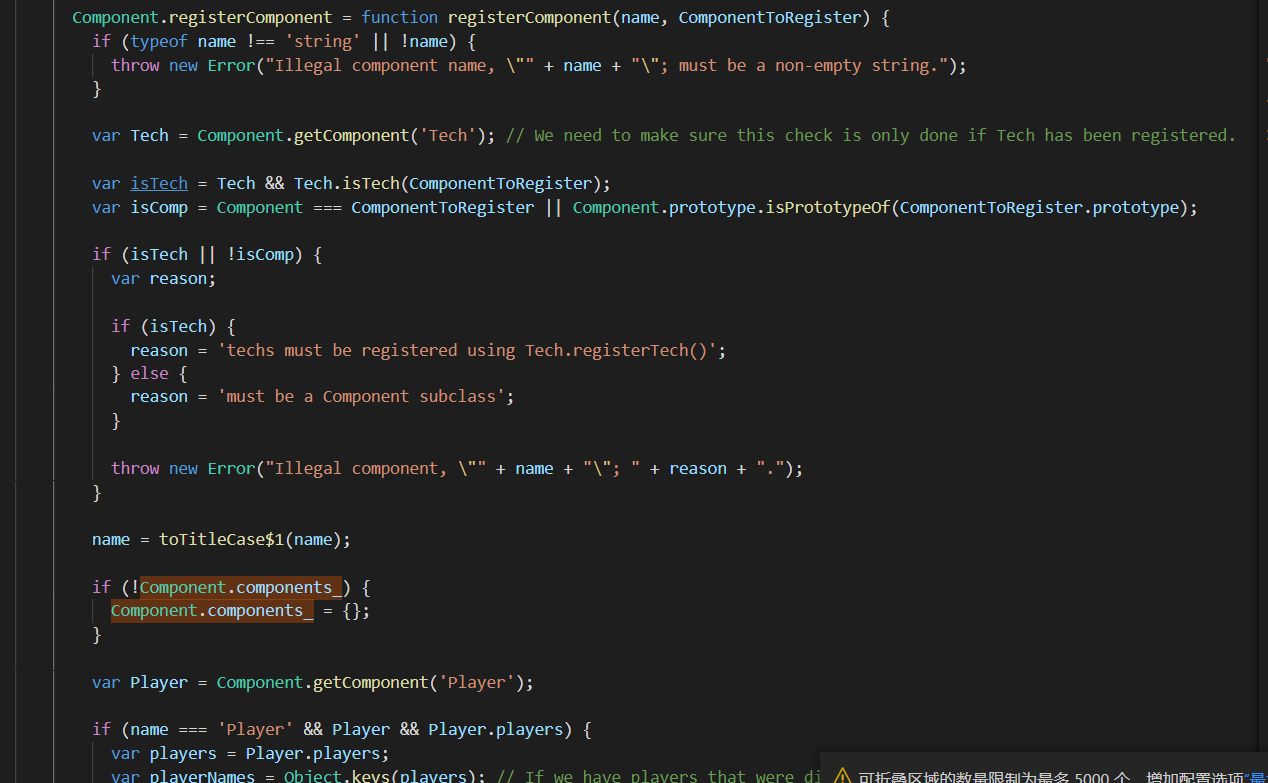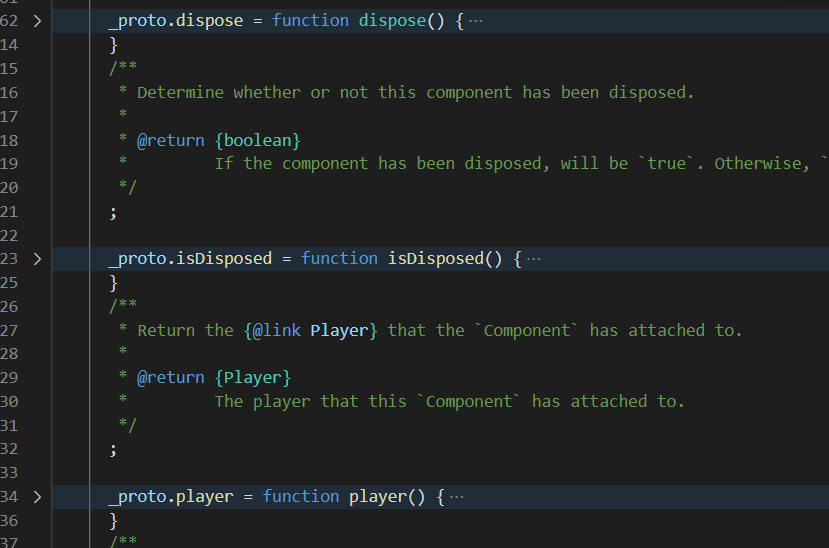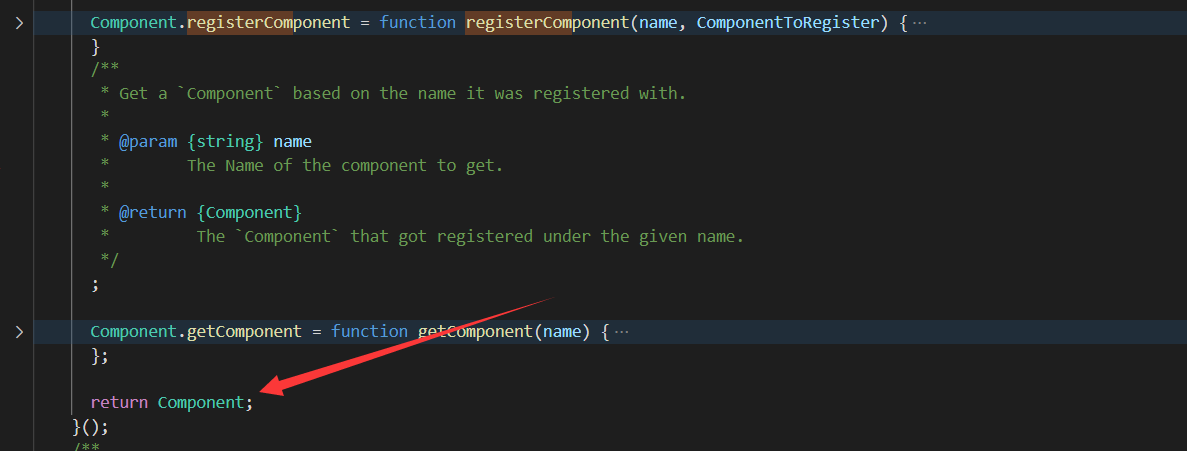video.js 劫持方式分析
本文的诞生是源于某星的技术对抗,相对其他文章可能较为极限,并且在对抗的过程中不断升级方法,所以如果没有能力可以暂且先跳过
正文
video.js 常见的劫持方式是对 window.videojs 进行 hook 来进行劫持,例如
unsafeWindow.savevideojs = undefined;
Object.defineProperty(unsafeWindow, "videojs", {
get() {
let result = unsafeWindow.savevideojs;
return result;
},
set(obj) {
unsafeWindow.savevideojs = obj;
},
});
但是很对网站为了对抗 videojs 劫持,会习惯性将 videojs 通过 Object.defineProperty 设置 writable 为 flase,从而导致无法赋值,所以我们的目标是不仅仅局限于 videojs 的入口劫持,而从源码的角度进行分析和处理。
通过 hook 绕过
针对 Object.defineProperty 设置 writable 的问题,我们可以通过对针对 Object.definproperty 也进行劫持来处理这个问题
let defineHook = Object.defineProperty;
Object.defineProperty = function (...args) {
if (args.length >= 2) {
if (args[1] === "videojs" && args[2] !== undefined) {
args[2].writable = true;
}
}
return defineHook.call(this, ...args);
};
源码分析
我们也可以尝试阅读源码来解决,video.js 源码
查看源码
(function (global, factory) {
typeof exports === 'object' && typeof module !== 'undefined' ? module.exports = factory() :
typeof define === 'function' && define.amd ? define(factory) :
(global = typeof globalThis !== 'undefined' ? globalThis : global || self, global.videojs = factory());
}(this, (function () { 'use strict';
umd 格式,直接拖底部看一下找到了return videojs;,发现传出一个函数,我们查找 videojs,是一个
function videojs(id, options, ready)
大致阅读一下代码
var player = videojs.getPlayer(id);
if (player) {
if (options) {
log$1.warn(
'Player "' + id + '" is already initialised. Options will not be applied.'
);
}
if (ready) {
player.ready(ready);
}
return player;
}
首先获取 id,判断是否存在,如果存在则不初始化
这里我一开始试图对 Getplayer 进行劫持,后来发现少了一些参数,所以决定放弃
var el = typeof id === "string" ? $("#" + normalizeId(id)) : id;
if (!isEl(el)) {
throw new TypeError("The element or ID supplied is not valid. (videojs)");
} // document.body.contains(el) will only check if el is contained within that one document.
// This causes problems for elements in iframes.
// Instead, use the element's ownerDocument instead of the global document.
// This will make sure that the element is indeed in the dom of that document.
// Additionally, check that the document in question has a default view.
// If the document is no longer attached to the dom, the defaultView of the document will be null.
if (!el.ownerDocument.defaultView || !el.ownerDocument.body.contains(el)) {
log$1.warn("The element supplied is not included in the DOM");
}
options = options || {};
hooks("beforesetup").forEach(function (hookFunction) {
var opts = hookFunction(el, mergeOptions$3(options));
if (!isObject$1(opts) || Array.isArray(opts)) {
log$1.error("please return an object in beforesetup hooks");
return;
}
options = mergeOptions$3(options, opts);
}); // We get the current "Player" component here in case an integration has
// replaced it with a custom player.
兼容化处理+options 合并,可以直接跳过,继续往下看
var PlayerComponent = Component$1.getComponent("Player");
player = new PlayerComponent(el, options, ready);
hooks("setup").forEach(function (hookFunction) {
return hookFunction(player);
});
return player;
这里发现通过了 Component.GetComponent 读了 Player 函数
然后对其构造,最后调用了 Hooks 回调钩子,传入了一个函数,然后循环遍历
等等,嗯?hooks 钩?往前翻再看看
hooks("beforesetup").forEach(function (hookFunction) {
var opts = hookFunction(el, mergeOptions$3(options));
if (!isObject$1(opts) || Array.isArray(opts)) {
log$1.error("please return an object in beforesetup hooks");
return;
}
options = mergeOptions$3(options, opts);
});
hooks("setup").forEach(function (hookFunction) {
return hookFunction(player);
});
经典的 beforeCreated 钩和 Created 钩,查阅一下video.js 手册
videojs.hook("beforesetup", function (videoEl, options) {
// videoEl will be the video element with id="some-id" since that
// gets passed to videojs() below. On subsequent calls, it will be
// different.
videoEl.className += " some-super-class";
// autoplay will be true here, since we passed it as such.
if (options.autoplay) {
options.autoplay = false;
}
// Options that are returned here will be merged with old options.
//
// In this example options will now be:
// {autoplay: false, controls: true}
//
// This has the practical effect of always disabling autoplay no matter
// what options are passed to videojs().
return options;
});
videojs.hook("setup", function (player) {
// Initialize the foo plugin after any player is created.
player.foo();
});
所以我们可以直接通过videojs.hook来曲线获得 video.js 创建出来的实例。例如:
videojs.hook("beforesetup", function (videoEl, options) {
//修改选项
return options;
});
videojs.hook("setup", function (player) {
//控制实例
});
具体的 hook 使用方式大家可以参考实战篇的相关内容
hook 钩被屏蔽下的解决方案
由于某星屏蔽了 hook 钩,所以我们继续探索其他方案
本质上学习观察源码的过程也是提升自我的一个过程
只要忍过第一个阵痛期,后面其实能看懂源码很爽的
很多时候你比只会看文档的程序员更了解执行原理!
之前的 hooks 已经失效了,那我们在初始化阶段几乎没有什么可以插手的地方了
hooks("beforesetup").forEach(function (hookFunction) {
var opts = hookFunction(el, mergeOptions$3(options));
if (!isObject$1(opts) || Array.isArray(opts)) {
log$1.error("please return an object in beforesetup hooks");
return;
}
options = mergeOptions$3(options, opts);
}); // We get the current "Player" component here in case an integration has
// replaced it with a custom player.
var PlayerComponent = Component$1.getComponent("Player");
player = new PlayerComponent(el, options, ready);
hooks("setup").forEach(function (hookFunction) {
return hookFunction(player);
});
hooks 钩的地方可以全部排除了
那我们唯一能下手的地方就是更核心的地方
也就是 Component$1.getComponent 函数
我们先观察一下他的源码
Component.getComponent = function getComponent(name) {
if (!name || !Component.components_) {
return;
}
return Component.components_[name];
};
这里判断是否为空,或者保存组件的位置是否为空,如果都不为空,则返回对应的名字
也就是说 Player 保存在Component.components_['Player']中
那我们需要设置的,就是对components_进行设置
全局搜索Component.components_以及查阅官方文档
可以找到这里

查阅官方文档可以发现,这里是注册组件的地方
那么思路来了,我们可不可以注册 Player 函数?
阅读源码开始!
if (typeof name !== "string" || !name) {
throw new Error(
'Illegal component name, "' + name + '"; must be a non-empty string.'
);
}
判断名字异常,可以跳过
var Tech = Component.getComponent("Tech"); // We need to make sure this check is only done if Tech has been registered.
var isTech = Tech && Tech.isTech(ComponentToRegister);
var isComp =
Component === ComponentToRegister ||
Component.prototype.isPrototypeOf(ComponentToRegister.prototype);
if (isTech || !isComp) {
var reason;
if (isTech) {
reason = "techs must be registered using Tech.registerTech()";
} else {
reason = "must be a Component subclass";
}
throw new Error('Illegal component, "' + name + '"; ' + reason + ".");
}
这里通过原型链判断是否继承与 Comp 组件或者继承于 Tech 组件
name = toTitleCase$1(name);
if (!Component.components_) {
Component.components_ = {};
}
name 函数经过某些处理,然后对 components_进行判断,如果不存在则进行初始化
var Player = Component.getComponent("Player");
获取 Player 组件
if (name === "Player" && Player && Player.players) {
var players = Player.players;
var playerNames = Object.keys(players); // If we have players that were disposed, then their name will still be
// in Players.players. So, we must loop through and verify that the value
// for each item is not null. This allows registration of the Player component
// after all players have been disposed or before any were created.
if (
players &&
playerNames.length > 0 &&
playerNames
.map(function (pname) {
return players[pname];
})
.every(Boolean)
) {
throw new Error(
"Can not register Player component after player has been created."
);
}
}
这里判断了 Player 地方进行了处理,可以看到首先判断名字是否是 Player
然后判断 Player 是否为空,如果不为空,则继续判断 players 是否存在
三者都存在的时候才禁止替换 Player 组件
也就是说我们可以在 players 不存在的时候对其进行组件替换
这里可以看出来 Vidoejs 的设计非常优秀,对大部分的功能做了一个组件化的抽离和替换。
Component.components_[name] = ComponentToRegister;
Component.components_[toLowerCase(name)] = ComponentToRegister;
return ComponentToRegister;
知道原理就非常简单了,我们可以直接写出代码
let originPlayer = videojs.getComponent("Player");
let registerPlayer = function (tag, options, ready) {
//这里做原originPlayer的对象生成,返回,处理
};
registerPlayer.prototype = Object.create(originPlayer.prototype);
videojs.registerComponent("Player", registerPlayer);
这里因为是油猴脚本,所以我直接上了一个 prototype 替换,按道理其实官方更推荐用 class 类,但是那就要做语法转换了,所以 hook 偷了个懒
劫持完毕之后我们就可以完美的劫持 Player 初始化前后的操作了!
更加底层的劫持方法
以为已经到组件的注册级别我就无法止步不前了?
我们的目标是突破天际!
我们前部分利用的是 Component.registerComponent 来进行组件替换 Player 函数
进行构造前和构造后的劫持
但是某星新一次的更新过程中 registerComponent 进行�了过滤
只要发现在替换 name 为 Player 即直接 return
我们可以总结 registerComponent 的核心代码其实就两句
Component.components_[name] = ComponentToRegister;
Component.components_[toLowerCase(name)] = ComponentToRegister;
其他的代码都是在做校验
也就是说最后是往Component.components_进行赋值
那 Component 是什么?查阅源码可以找到

这里 Component 是一个函数,然后获取了他的原型链_proto,往原型链挂载了大量的函数

我们拖到最后发现发做完各种函数和原型函数处理,返回了 Component

那么我们看看返回给了谁

返回给了 Component$1,然后再下面两句做了一下兼容性处理
最后 registerComponent 自身,等等,自身?
那我们通过 GetComponent 岂不是就能拿到 Component$1
再直接找到components里修改Player
这样就绕过了registerComponent函数的过滤检测
理论建立完毕,实践开始
let originPlayer = videojs.getComponent("Player");
let registerPlayer = function (tag, options, ready) {
let player = originPlayer.call(this, tag, options, ready);
return player;
};
registerPlayer.prototype = Object.create(originPlayer.prototype);
videojs.getComponent("Component").components_["Player"] = registerPlayer;
直接劫持成功!
你不仅仅可以修改 Player
也可以考虑对其他的一些你想劫持的函数进行劫持
这几篇的核心意义不是在教大家如何注入 video.js
而是在教大家如果通过阅读源码提升自我
以后碰到其他的问题,处理也会更加得心应手